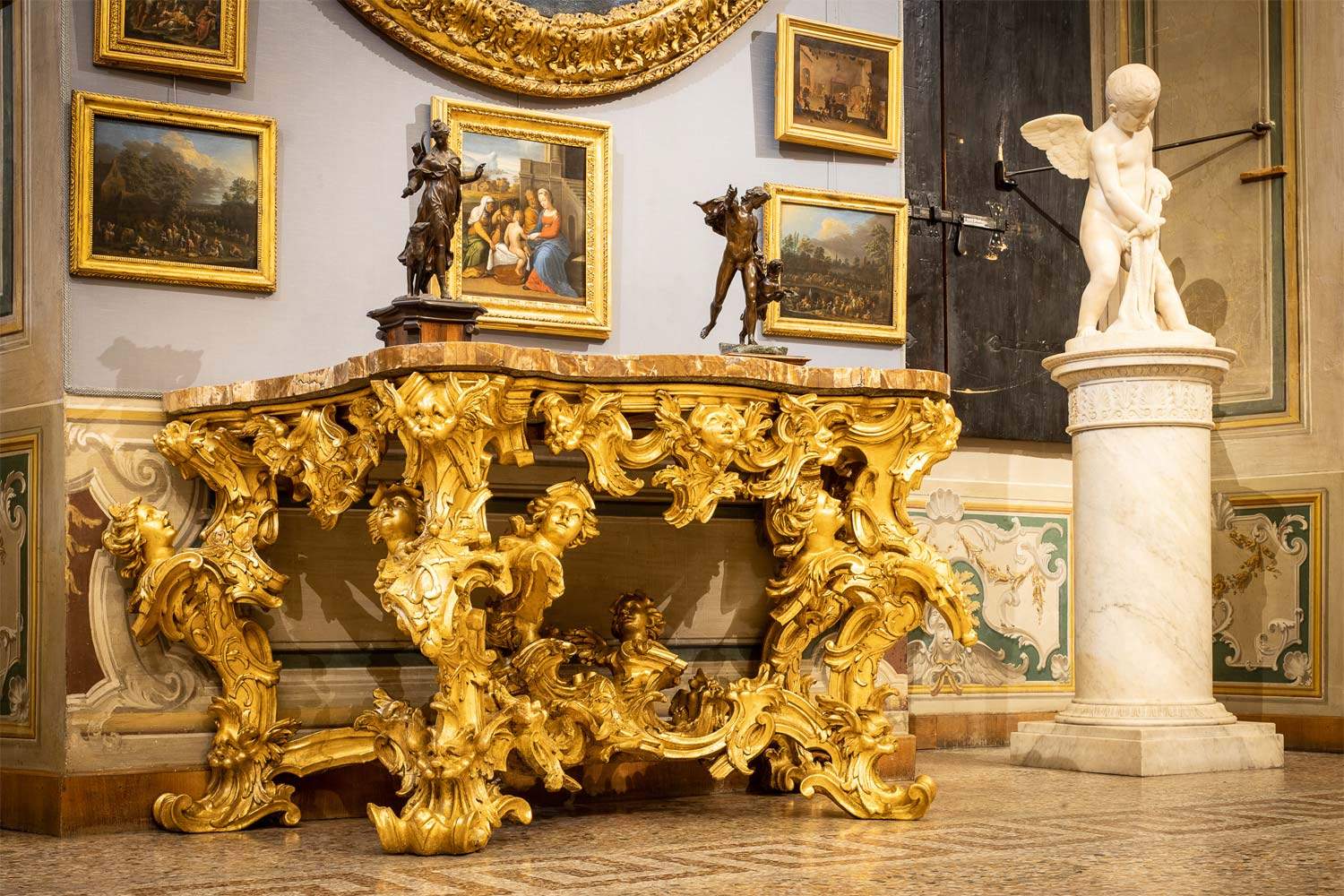In Rome , the restoration of the spectacular eighteenth-century console of the Corsini Gallery ends, made possible thanks to the proceeds raised from the sale resulting from the Vino Civitas initiative, promoted by the Civita Association thanks to an agreement signed with the museum in 2019 and recently renewed until 2023. An agreement that each year provides for the restoration of a work of art from the National Galleries of Ancient Art, of which the Corsini Gallery is part, thanks to part of the proceeds from the sale of “Civitas” wine, produced by the Caparzo label.
The console being restored, again on display in the Sala del Camino of the Corsini Gallery, dated around 1730, has a flat bottom and was therefore intended to be placed against a wall. The straight legs are embellished with large volutes from which plant elements and female heads emerge. Other faces also emerge from the lower cross and the central crossbeam where the face is flanked by articulated volutes in the form of lion heads. The complexity and dynamism of the carvings invest all parts of the structure and is accentuated by the arrangement of masks and female heads that suggest ever-changing lines and views.
The distinctiveness of this ornamentation is found in some other carved tables now in public and private collections (Milan, Castello Sforzesco; Los Angeles, J. Paul Getty Museum) and in the decorations of some carriages, such as the one called “of John V” now in Lisbon (Museu Nacional dos Côches) and evidently belongs to a Roman workshop active in the first half of the 18th century for the city’s leading families.
The work, the museum points out, is the most elaborate and rich example among the consoles that now decorate the rooms of the Corsini Gallery, commissioned by Neri Maria Corsini and his brother Bartolomeo for the palace on Via della Lungara, purchased in 1736 and transformed into a grandiose building designed to celebrate the family’s grandeur. Although the numerous documents relating to the furnishings still preserved in the Corsini family archives have made it possible to illuminate a world of artisans and artists active in Rome in those years (starting with the prolific workshop of Giuseppe Corsini and his wife Lucia Barbarossa) it has not been possible to trace the author of this extraordinary work whose virtuoso carver still awaits identification.
“A winning model of public-private collaboration,” said Flaminia Gennari Santori, director of the National Galleries of Ancient Art, “capable of contributing to the enhancement, protection and enjoyment of our unparalleled artistic heritage. Reciprocity between public institutions and private companies becomes a strategic key to increase economic resources and improve the capacity of our museums to intervene. Thanks to Civita, it is possible to discover and admire in all its splendor a work that played a very important role for the Corsini family, of which we are all heirs and dutiful guardians.”
“The Vino Civitas project,” says Giovanna Castelli, Director of the Civita Association, “was born from the desire to contribute, with concrete support, to the preservation and enhancement of our artistic heritage, thus linking the wine business to the world of culture. Thanks to the purchase of wine also by numerous companies associated with Civita, united by a common interest in qualifying their image by associating it with the ’value world of art,’ numerous masterpieces have been restored over time. We are delighted that, once again this year, the proceeds from the sale have been donated to the restoration of a work from the extraordinary collections of Palazzo Barberini and Galleria Corsini, two places of culture in our country of absolute historical and artistic value.”
After the restoration work on Bartolomé Esteban Murillo’s Madonna of the Milk, which returned in 2021 the discovery of another painting under the current canvas, the work on the Corsini Gallery’s console has made it possible to restore light and splendor to a fundamental component of eighteenth-century taste, that of the furnishings, which was often overlooked compared to the paintings and sculptures, but which constituted in Roman palaces one of the most impressive elements.
 |
| Rome, restoration of Corsini Gallery's spectacular 18th-century console completed |
Warning: the translation into English of the original Italian article was created using automatic tools. We undertake to review all articles, but we do not guarantee the total absence of inaccuracies in the translation due to the program. You can find the original by clicking on the ITA button. If you find any mistake,please contact us.